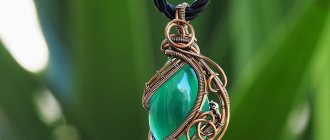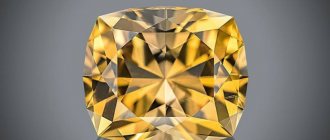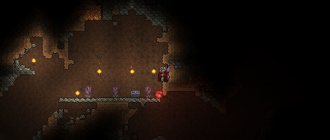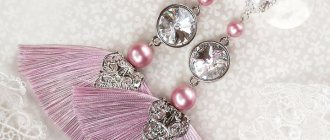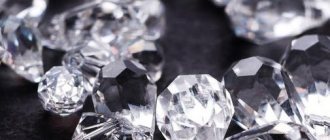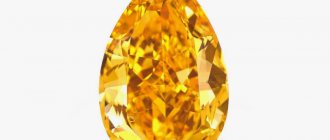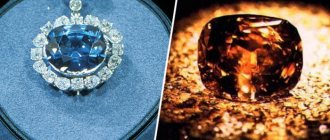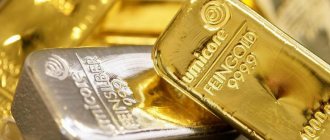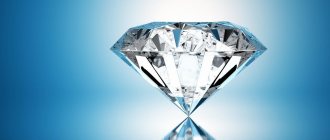"Pitfalls" of the diamond exchange
Many people associate Israel with high-quality diamonds, although this country has nothing to do with diamond mining. The Israeli Diamond Exchange is to blame. Let’s start with tips on how to profitably buy precious stones.
Free excursions
A free excursion to the Israeli Diamond Exchange is a great opportunity to lead an inexperienced tourist to the right store. Let's take a closer look. The advantage of such an excursion is that you will certainly be able to enjoy the exhibits in the Diamond Museum named after. Harry Oppenheimer. The downside is that the stores you find yourself in sell stones at a huge markup.
Shops near the exchange sell diamonds at a huge markup
Why is the price of diamonds in stores near the exchange not the same price as at the exchange itself? Because these stores, just like any other stores outside of Israel, buy stones on the exchange for resale and add their own interest to the value. The psychological factor comes into play - “I’m on the stock exchange, which means I’m buying a stone at the best price.”
Pay attention to flyers and discount coupons for 25-50%. In Israel they are often given out to tourists. These are discounts on the purchase of stones in a certain store. But in reality it turns out that a person “from the street” without a flyer can get a better price from the seller
Processing factories
Many large stores in Ramat Gan have jewelers and diamond cutting machines. But calling such a store a factory is wrong. And an excursion to such a “factory” is rather another attempt to “lure a buyer” to a large store.
The price of diamonds in large-scale stores increases due to rental payments, staff salaries, and even expenses associated with a “factory tour.”
Dealers, brokers and other intermediaries of the Israel Diamond Exchange on the Internet
The Internet is full of offers from supposedly direct representatives of the exchange. But those who call themselves “official diamond exchange dealers” do not always offer high-quality diamonds with GIA certificates at a good price.
Most often, they create websites that advertise a huge assortment of stones. But already at the purchasing stage it turns out that many diamonds are out of stock. It also often turns out that there is “exactly the same stone”, but with a different certificate.
Where is the best place to buy diamonds?
Why do many residents from Moscow, St. Petersburg and other cities of Russia and the countries of the former Soviet Union go to Israel to buy diamonds? After all, diamonds are not mined there! But it so happened historically that today Israel is the largest producer of cut diamonds. The annual turnover of the Israel Diamond Exchange exceeds $22 billion per year. Israeli cutting is rightfully considered one of the highest quality in the world.
In addition, there are three main reasons why buyers from all over the world come to Tel Aviv:
- Cut quality
- Reliability of the transaction
- Prices below the Rapaport scale
The quality of Israeli cutters
Although the diamond market is quite saturated with offers, it is not always possible to find a stone with good quality characteristics. This situation exists even in diamond-producing countries such as Russia. The fact is that the highest quality raw materials are most often exported. First of all, it is bought by large producers, including the Tel Aviv Diamond Exchange. In our catalog you can find more than 250 stones with the highest characteristics in terms of clarity, color and cut quality.
It is often necessary to find a pair for a set with similar characteristics or a series of inserts according to specified parameters. In addition to its own production, it has access to the database of all official dealers of the Diamond Exchange and many manufacturers from other countries. We can always choose the options you need for the quality characteristics at the best price.
Reliability of the transaction
Diamonds are one of the most expensive gems in the world. Transactions for their acquisition can be compared to buying a car or real estate. Would you buy a car or an apartment with unverified or questionable documents, or without them at all? Of course not! But in the gemstone market there are many tempting price offers for sale without a certificate at all, with expert opinions that do not have degrees of protection against counterfeiting, with manufacturer’s tags that do not provide complete information even on the 4 main parameters (4C).
Transactions at the Diamond Exchange in Tel Aviv are accompanied by reliable certificates from the Gemological Institute of America GIA; a micro seal with the certificate number is placed on the girdle, which you can see at 30x magnification. The dealer’s office has the equipment necessary to verify the stone’s compliance with the certificate. When making large transactions, you can always do an additional check, since the laboratory branch is located in one of the exchange buildings.
Diamond prices
Everyone understands that buying directly from the manufacturer is more profitable than buying from an intermediary or in a retail store. However, getting directly to the owner of the first hand is not so easy. If you do not have direct access to the head of the company, then you will end up with all sorts of intermediaries.
Israel is a very democratic country. Big officials and big businessmen are not so far from the people. Therefore, it is with us that when making even a small transaction of 3 to 5 thousand dollars, you can talk to the owner of a cutting factory or an exchange dealer. With us you will be sure that you are making a deal with a dealer at prices below the Rapaport scale.
1 carat at manufacturer's price
The most sought-after stone on the diamond market has always been the 1-carat stone. Our catalog contains more than three thousand types of diamonds from 1 to 1.20 carats of various cut shapes and various quality characteristics. We have wholesale prices at which gemstones are bought by jewelry factories and stores. When purchasing on the exchange, tourists from other countries are exempt from paying VAT.
Characteristics of gemstones
How do you choose a new smartphone? By memory size, image quality, operating system. In other words - by characteristics, and not just by design. In the same way, you need to choose a diamond, taking into account its main parameters:
- cleanliness;
- color;
- cut (its shape, quality of polishing, symmetry of edges);
- mass;
- fluorescence.
All these characteristics affect the price, but the main thing here is that they are indicated accurately, and not “at a stretch” and overstating the indicators.
Cut is the parameter you need to look at first
Let's start with the classification of diamonds
A diamond is a precious stone, the price of which depends on its characteristics (4C):
- masses;
- cutting;
- cleanliness;
- colors.
To determine the level of a particular parameter, two types of designations have been introduced: alphabetic and digital.
The letter designation is used by the international assessment system, and the digital designation is typical for Russian technical specifications (the system was invented back in the USSR).
Diamond weight
The weight of a gemstone is indicated in carats.
1 carat = 0.2 g
Cut
This parameter tells you how symmetrical the edges are and how well they are polished. The better the quality of the cut, the better the light reflects from the edges.
Regarding the cut shape, a diamond can have the following shape:
- circle;
- princess;
- marquis;
- heart;
- pear;
- oval;
- baguette;
- triangle and others.
Emerald cut diamond Emerald cut diamond
Purity
Based on the purity category indicated in the certificate, you can understand whether the gem contains inclusions, and, if so, then in what volume.
Color
The color gradation is indicated by letters (from D to Z). The letter D is assigned to stones with a bluish tint. The further away the letter, the more yellow the diamond has.
Certificates and assessment systems
Rating scales
There are only two scales for assessing the quality of diamonds. The first is international. It is used in Israel, the USA, Great Britain and other large countries. The second is Russian, invented back in Soviet times. To convert the parameters of a stone from one system to another, you can use a special correspondence table.
Since the international system is more widespread, let's talk about it. How and how diamonds differ:
- color, from D to Z (the price of white diamonds is significantly influenced by the yellow tint; if there is none at all, the stone is classified as category D; starting from category M, noticeable yellowness appears);
- purity FI, IF, VVS1, VVS2, VS1, VS2, SI1, SI2, I1, I2, I3 (this parameter indicates the presence/absence of inclusions, cracks and other defects);
- cut quality (it can be excellent, very good, good, fair, poor);
- cut shape;
- presence/absence of fluorescence.
Certificates
So which certificate most accurately reflects the parameters of the stone? Certified by GIA - Gemological Institute of America. This non-profit organization operates to the highest standards and reflects the performance of a stone without inflating it.
Similar in reliability to GIA are HRD (Higher Diamond Council) certificates, but they are not so widespread in the world
All other certificates may contain inflated characteristics. This means that it will no longer be possible to sell such a diamond profitably.
Which diamond should I buy?
From an investment point of view, a good diamond is one that can be sold for the right amount of money:
- without a yellow tint (color from D to G);
- without noticeable defects (cleanliness from IF - VS1);
- preferably round cut;
- with GIA certificate;
- weighing 1 carat or more;
- no fluorescence.
Behind the closed doors of the diamond exchange
Made in Israel
How to buy a diamond “correctly”: practical advice from personal experience
Author: Anastasia Krasnoshtein 02/29/2016
For most tourists, a visit to the Diamond Exchange as part of free organized tours is limited to visiting a shabby museum and huge jewelry stores that have nothing to do with the exchange. But where the excursion usually ends for an inexperienced viewer, for a prepared person everything is just beginning.
Photo: Mariana Stebeneva
The Israel International Diamond Exchange is the most secure place near Tel Aviv. On fifty floors of three buildings, the rarest, largest and most expensive stones in the world are moved, stored in safes, bought and sold.
Here diamonds are selected for the best European jewelry houses, rough diamonds are appraised and multi-million dollar deals are concluded, including with private clients who wish to maintain their anonymity. And young Israelis also come here, for example, to order an engagement ring for their future wife: everyone is welcome at the exchange, with any size of wallet, you just need to make an appointment in advance with a familiar dealer. I have one.
Exchange from the inside
Having passed through an inconspicuous revolving door and leaving a document along with fingerprints to the guards, I found myself in the cramped corridors of an unsightly building with low ceilings and joined the stream of people involved in the world of pure carats and impeccable edges. Everyone looked different: an Orthodox Jew in a black coat and hat and a dapper dandy in Prada were in the elevator together, but most of the dealers looked ordinary and not at all befitting luxury dealers. And by Moscow standards, the interiors of the exchange itself are more reminiscent of class C offices, which for some reason does not confuse either local buyers or sellers at all.
Sitting down in a modest chair, Daniil Kubsky , a dealer I know, explains: like any exchange commodity, stones are sold quickly here, with a fixed markup of 2-5%, and there is neither time nor money for excesses. “For interiors and champagne in Baccarat glasses, go to Graff,” he adds sternly. “True, the same diamond will cost 5 times more there.” I didn’t want it to be more expensive, so I had to bite my tongue.
Photo: Mariana Stebeneva
Photo: Mariana Stebeneva
Prices
As if to confirm his words, Daniil showed me the Rapaport price list, which, it turns out, is used by all dealers on world exchanges - it contains recommended purchase and sale prices for diamonds of different clarity and different sizes: 0.3 carats, 0.5, one carat and so on up to eleven carats.
Such a current price list, if desired, can be downloaded on the Internet. I have a lot of respect for structured prices and signs, so the pleasure clearly showed on my face and everyone's mood was noticeably brighter. I relaxed and began to carefully study the price tags. I was struck by two things: first, that a 1.4-carat diamond can be bought for quite a pleasant $3,000, and second, that a modest stone half the size can cost three times as much. How so?
Stones
“Look at the values of color and purity in the table,” Danya suggested. “Karatnik” comes with color M and purity SI2, which means a slightly brownish or yellowish tint plus foreign inclusions; while a half-carat stone has the highest rating in terms of clarity (IF) - and color (D). That is, this diamond is flawless.” Still not understanding what inclusions could cause such a price difference, I expressed a desire to see the stones myself and appreciate them. Several diamonds suddenly materialized from paper parcels, packaged in bags similar to those issued at the airport for liquids less than 50 ml. (the peculiarities of trade in luxury goods never ceased to amaze me). Danya placed two one-carat stones side by side on a white surface, and I saw that the right one had a barely noticeable pinkish-brown tint. Having unfolded some booklet in front of me (as it turned out, a GIA certificate), he showed on the diagram all the foreign inclusions: a gas cloud to the right of the crown, a lint to the left and some kind of mineral at the base. I could see all this in the stone only armed with a microscope. The second stone had impeccable characteristics both according to documents and under a microscope; it proudly boasted of ideal transparency and purity and... left me indifferent. It seemed that the defects of the stone endowed it with a special individuality, due to which it seemed to enter into a relationship with the future owner.
Photo: Marianna Stebeneva
“Do you want me to show you something special?” — a large pink “tear” poked out of the package.
Not India
“Fancy Pink color, VS1 clarity - this is a fairly rare diamond, but it is precisely these stones that make the main turnover on our exchange,” Danya continued to say. “Once upon a time, the Israelis were engaged in all sorts of stones, but government support for our business dried up, money and interests flowed into Hi-Tech, so now the Israeli exchange specializes in exclusive diamonds that you cannot buy in India or Russia.” Over the next ten minutes I learn that all the leading jewelry houses and watch brands buy diamonds on the Israeli exchange, including Chopard , Graff and further down the alphabet; that in Mumbai there is a street where you can buy a handful of small copies at a very attractive price, but no one guarantees that you will get them safely to the plane. I also find out that rarely does a medium or large diamond on the Indian or Russian exchanges come with an American GIA certificate.
Stone passport
“Well, why should I bother with this certificate?,” I was surprised, “I’ll come to you with this stone, at what discount will you take it without a certificate?” “I won’t take it at all,” Daniil said calmly.
Photo: Leah Geldman
It turns out that there is a huge mass of synthetic stones circulating on the market, as well as “refined” diamonds that undergo the HPHT heating procedure, which “squeezes out” excess shade and defects from the diamond. A GIA laboratory technician can determine that a stone has achieved such excellent quality through additional manipulations, but a simple dealer without special equipment cannot. In the GIA certificate, such a stone will be marked Color…..E*, and its price will be 30%-40% lower than a natural diamond, similar in other characteristics. As with a great fake, a masterpiece will remain a masterpiece to the uninitiated, but you won’t be able to fool a savvy connoisseur. “How do you determine that the certificate belongs to this particular stone?” I continued. “It’s simple: the certificate number is engraved on the girdle.”
Words etched in eternity
And, indeed, taking a special magnifying glass, I saw an engraved number on a narrow belt separating the “crown” from the “pavilion”. And then the thought occurred to me: “What if I want to engrave my initials on a stone?” “You can write whatever you want on it, we do the engraving on site.” It turned out that for a nominal fee you can put any inscription on a diamond, and imprint the most secret words in stone for centuries. This thought seemed damn romantic to me.
From stone to ring
Having dealt with the stone, I decided to find a setting for it. I knew that in the area adjacent to the exchange there were dozens of jewelers who were ready to turn diamonds into exquisite jewelry.
Photo: Mariana Stebeneva
Photo: Mariana Stebeneva
Photo: Mariana Stebeneva
But I had no idea that in nature there were stores that sold gold chains by the meter, and frames like buttons: at first glance, the Pasternak Findings we came to looked exactly like a cramped haberdashery store. And only after taking a closer look did I realize that there were meters of gold chains wound on reels, bags with blanks for earrings were hung on the walls, and the display cases were littered with frames for rings made of white, pink and yellow gold. The store works only with professional jewelers and entry from the street is limited, but accompanied by a member of the exchange, I was shown the most interesting pieces. Together with the jeweler introduced to me, we reviewed all the options priced at $200-300, but the standard shapes did not please my eye. After dozens of viewed samples and an hour spent, I decided to look for design inspiration in proven brands. After browsing through online catalogs, I found something I liked, and the jeweler said that a piece of this design could be ready in two to three days. “Faster than I was going to get here,” I thought.
Piece of Eternity
Later, sitting in the cozy bar of the Norman , we discussed for a long time the stories of the transformation of unsightly stones into amazing diamonds, tales from the stock exchange, and how Danya dropped a two-carat stone into the grill of the central air conditioner (hint: they dismantled the entire riser down to the first floor). And suddenly the life of those gray buildings was filled with a completely different meaning, and the people from the stock exchange seemed to be involved at the same time in the world of art, and big risks, and in the world of the secrets of primordial life that the earth keeps.
Photo: Leah Geldman
Photo: Leah Geldman
Photo: Leah Geldman
Practical advice
- Buy a diamond on the stock exchange only from a licensed dealer - then it will cost reasonable money and will be sold according to all the rules, with a GIA certificate. Dealers do not risk their reputation, because they may lose their license and the right to be on the stock exchange if they are caught in fraud.
- Having decided on the approximate parameters of the desired diamond, calculate its approximate cost in advance. Here you can find out the approximate price based on the selected shape, size, color, clarity of the diamond and the presence of a certificate, and also read the description of such a stone. Rare colored diamonds have an individual price, and the standard price does not apply to them.
- Make an appointment with the dealer a few days in advance and ask to have several diamonds ready for appraisal at once. Let us know if you require the services of a jeweler. Manufacturing the product takes from several hours to two weeks, depending on the complexity.
- And one last thing. Do not buy diamonds if you regard them as an investment - prices in this area only increase for the rarest pieces. However, as a means of savings, diamonds are ideal: compact, indestructible and... very beautiful!
The price of a diamond and Rapaport
To find out the price of a diamond with certain characteristics, you can use Rapaport, the main international diamond price indicator. Sellers have access to it. However, there are also nuances here:
- You can ask the seller for a discount on the Rapaport price;
- “Rapaport” indicates the price of one diamond and should not be confused with the total weight of small stones in the product (since a placer with a total weight of 1 carat costs much less than one stone weighing 1 carat).
The first price list for diamonds from Rapaport was compiled in 1978
What else should buyers know?
GIA certificates are not only issued for large diamonds
There are many small and medium-sized diamonds (0.3 - 0.5 carats) with GIA certificates. Do not believe it if the seller says the opposite, trying to force a stone on you with the conclusion of another organization.
The quality of a diamond is not related to the deposit
It is incorrect to say that Russia has the highest quality diamonds in the world. When comparing different deposits, we can only talk about the percentage of gem-quality stones in a particular place to the total quantity. But regarding cutting, everything depends on the hands of the craftsmen.
Branded diamonds
Branded items are more expensive than mass-produced jewelry. This is due to their unique design and signature engraving. But you shouldn’t associate the inflated cost with the impeccable characteristics of diamonds in such jewelry.
Ramat Gan. Diamond Exchange / Galloping through Israel / Vladimir Kezling
Israel ranks first in the world in diamond sales. It is here that the world's largest diamond exchange is located, through which more than half of the world's diamonds are processed. The diamond market is a special world that lives by its own laws and rules. We were able to see how the heart of this world beats. My story today is about a visit to the Israeli Diamond Exchange.
The small city of Ramat Gan, adjacent to Tel Aviv on the east. Several densely clustered skyscrapers form the business center of Israel. Their pillars piercing the sky are visible from almost anywhere in Tel Aviv.
Here, in the heart of Israel's business life, the heart of the largest of the five diamond exchanges in the world beats every day. The diamond trade is one of Israel's main sources of income. That is why the diamond industry enjoys unusual conditions from the state - this is the absence of duties on the import and export of rough and polished diamonds, lobbying for the interests of diamond companies at the international level, and the absence of strict control over any large monetary transactions in this area.
The main building of the Diamond Exchange is the tallest skyscraper in Israel - Moshe Aviv. The round tower is 244 meters high and has 74 floors, 5 of which are underground.
In total, the diamond exchange occupies 4 skyscrapers, representing a small quarter.
These buildings are among the most guarded in all of Israel. Although there are no official prohibitions on photography, the guide kept asking me to put my camera away and not take pictures. Yeah, fuck you!
The history of the Israeli Diamond Exchange began in 1937, when the first commercial organization for trading diamonds was created, then still in Palestine. Then it was called the “Diamond Club of Palestine” and occupied only one small room.
Today, the skyscrapers owned by the diamond exchange house offices, shops, diamond processing plants, post offices and banks, customs, places of worship, restaurants and even a small museum, which I will talk about later. In essence, the diamond exchange is a small state within a state.
The museum is located on the first floor of one of the skyscrapers.
The first thing visitors are shown are copies of the world's most famous diamonds.
"Cullinan I" was cut from the largest diamond ever found, the "Star of Africa" diamond, named after mine owner Thomas Cullinan. A diamond weighing 3,106 carats was accidentally discovered in 1905 in South Africa. Only after 2 years of careful study did the jewelers begin to process the diamond. It was split into several large pieces, from which 2 large diamonds, 7 medium ones and 96 small ones were made. A small piece of 69.5 carats was left untreated. The largest of the resulting diamonds, “Cullinan I”, which became an adornment of the scepter of King Edward VII of Great Britain, has 74 facets and weighs 530.2 carats.
“The Koh-I-Noor” is the most famous diamond of antiquity. It was found in India about 5000 years ago. The first mention of it dates back to 1304. Over its long history, the diamond changed hands many times, most often during various wars - at various times its owners were Indian Rajahs from the Malva clan, the rulers of the Mongol Empire, the Persian Shahs... Of the eighteen owners of this diamond known by the mid-19th century, many died in treachery, others fell in battle, the survivors were expelled and died in poverty. In 1849, the 186-carat diamond, which retained its old Indian cut, was presented to Queen Victoria. English jewelers decided that the new cut would make the stone sparkle with renewed vigor. After recutting, the carat weight decreased to 109 carats, and the color changed from light yellow to transparent. Since 1911, the Kohinoor has graced the crown of the Queen of Great Britain and is the largest diamond in the British Crown Jewels collection.
The Steinmetz Pink is the world's largest pink diamond. This amazingly colored diamond found in South Africa weighed about 100 carats. It took just over 20 months to cut, after which its weight was reduced to 59.6 carats. This is one of the few diamonds in the world that is considered visually flawless.
The Millennium Star is the second largest clear diamond in the world. Its weight is 203.04 carats. It was cut from a 777-carat diamond found in 1990 in the Congo.
The Oppenheimer is a yellow uncut diamond weighing 253.7 carats, found in 1964 in South Africa.
In the next room there is a collection of minerals from all over the world.
Installation showing the refraction of light by a cut diamond.
To understand how close a diamond is to perfection, it is assessed using the “4C” system, which characterizes the 4 main qualities of a gemstone: - carat - weight; - color - color; - clarity - purity; - cut - cut.
The weight of a diamond is measured in carats. The word "carat" comes from the ancient Greek name for the carob tree, the seeds of which were used in ancient times to estimate the weight of precious stones and pearls.
Today, 1 carat is equal to 0.2 grams.
1 carat is divided into 100 points.
It is important not to confuse the carat, which is used to grade diamonds and indicates their weight, with the fineness of precious metals, which indicates the content of the substance in the alloy. In this case, 1 carat will be equal to 1/24 of the mass of the pure substance in the total mass. Therefore, the maximum possible value - 24 carats - means that we are talking about pure metal. In Russia, a system for assessing precious metals by fineness has been adopted; pure metal is designated with a fineness of 999.9. For example, the most common 585 gold standard in Russia is just over 14 carats and indicates the content of 58.5% pure gold in the jewelry.
The color of a diamond is the second most important feature that characterizes its value. When assessing a mineral, it is compared with a standard, after which it is given its own classifier.
The most common classification today uses Latin letters - from D, corresponding to a completely transparent diamond, to Z, corresponding to a diamond of a rich light yellow hue. All colors that do not fall under this classification are called “fancy”, these include diamonds of blue, pink, orange and other shades. Such minerals are extremely rare, so their cost is the highest.
Most diamonds fall in the E to N range.
The third parameter for evaluating a diamond is its clarity. Diamond, like any other natural mineral, can contain various inclusions and defects. The examination is usually carried out using a 10x magnifying glass, which helps to assess the number, nature, size and location of various inclusions and defects.
The last, fourth and most difficult parameter to evaluate for a diamond is its cut.
Only at the beginning of the 20th century, when cutting diamonds, they began to use theoretical calculations that took into account the properties of diamonds. Until this time, cutting forms were developed exclusively empirically.
The first scientist to calculate the optimal proportions and cutting angles at which a diamond will be characterized by maximum brilliance was Marcel Tolkowsky. Since then, the ideal has been considered a round diamond with 57 facets, 33 of which are on the top, and 24 on the bottom. The ideal size of a diamond's table should be 53% of the diameter, and the crown (top) and pavilion (bottom) angles should be 34.3 and 40.55 degrees, respectively.
This is the cut that is considered classic today. In addition to the classic, there are “fantasy” cut shapes: marquise (55 facets), pear (56 facets), oval (57 facets), baguette (27 facets) and many others.
The world leaders in diamond mining are: Botswana, Russia, Canada, South Africa, Angola, Australia and Namibia.
Now I will briefly tell you how diamond processing occurs.
An interesting fact is that despite the development of technology, today diamonds are processed exclusively with diamonds.
Before a diamond is sent for cutting, it is examined to determine its features and defects. Based on this information, a forecast is made of the weight of the finished diamond, its geometry and cost.
The further path from diamond to diamond consists of 7 steps: - marking; - sawing; - rough grinding; - polishing; - cutting; - polishing; - washing.
The first step is marking - lines are drawn onto the diamond along which the cutting will take place in the future. The main goal of marking is to ultimately obtain a diamond of the highest possible value.
After marking, the diamond is sawed or split into pieces. At the same time, whenever possible, they try to remove natural defects.
The next step is rough grinding, during which all excess protuberances are removed from the mineral.
Next, the diamond is polished. This is probably the most important operation on the way to a diamond. During polishing, the diamond receives its future shape. Usually grinding takes place in two stages - first rough, then finishing.
After this, the diamond is cut, during which edges called facets are applied to the semi-finished product with a diamond disc. Linseed oil is used as a lubricant. The process of applying facets occurs in a certain sequence. The first step is to make a platform on top of the stone. After this, the main facets are applied, first to the lower part of the diamond - the pavilion, and then to the upper - the crown. After this, additional edges are applied in the same sequence. Lastly, a faceted strip is added around the circumference of the stone - a girdle, and a small area at the bottom of the stone - a culet.
The penultimate stage is polishing, which ensures a perfectly smooth and clean surface of the diamond.
The final step is to wash the finished diamond, which removes production dirt and oil from the surface. Washing takes place in several steps: it all starts with boiling in a washing solution of concentrated sulfuric acid, and ends with rinsing in distilled water. After this, the finished diamond can be sold.
Or use it for inlaying helicopter models.
Or for a fountain pen.
The pride of the museum is a diamond clock that turns over every 30 minutes.
A small zoo of various precious stones.
After the museum, we were taken to the office of one of the companies selling jewelry, where we were to be offered jewelry at incredibly low prices. If I had known that this would drag on so long, I would have immediately given up on everything and gone on for a walk on my own.
At first we sat downstairs in the sun for about an hour and waited for us to be called. After this there was a tedious wait in line and a long procedure for obtaining passes. We were photographed, fingerprinted, after which our passports and all photographic equipment were taken away, and only after that we were escorted to the company office under supervision.
From the windows of a small office located on the 26th floor of one of the skyscrapers, a beautiful panorama of Tel Aviv opened up. In the middle of the office there were several display cases with jewelry, the price of which sometimes exceeded a million rubles.
All in all, several hours of time were wasted. After that, as a bonus to the excursion, we were taken to the ancient port city of Jaffa. But that's a completely different story...
The show will go on!
kezling.ru
